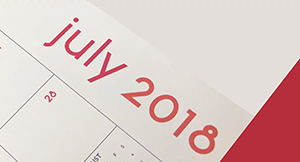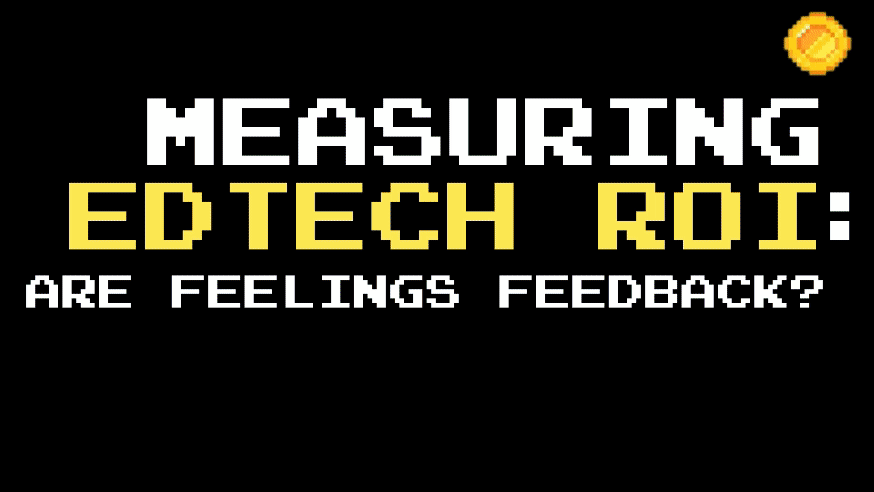
Advancer Twelve, this is Wordsmith One. How copy? Over.
You’ve heard the lingo—it's all over action movies and procedural dramas. But have you ever stopped to think about why “radio talk” is used?
Besides the obvious—it sounds cool, duh—radio talk is actually a really functional and important method of communicating. The people who use it (military personnel, emergency responders, and the like) simply can't afford a miscommunication. The verbiage is designed to reflect that.
On the surface, radio etiquette doesn't have much to do with school districts. But as it’s the mode of communication our nation’s heroes have used to work through emergencies, from criminal chases to wars, there’s actually a lot we can learn from this tried and true method.
Let’s investigate.
Plan your communications
Radio etiquette is basically its own language. With all its funky phrases, it likely wouldn’t make much sense to an outsider. (Roger? Who the heck is Roger?) However, users understand it because they’ve taken the time to learn to communicate in this way.Effective communication doesn’t just happen; it takes careful practice and planning. Push yourself to pinpoint your communication weaknesses and to sharpen your skills. Practice listening. Then find out what channels of communication people at your district prefer, and use those findings to shape your district’s messaging.
It’s essential that you not only plan for everyday communications, but also for crises. (As Carmen Collins put it, “You can’t wait for the crisis to develop a plan. If you do that, your plan is going to suck.”) A great way to formulate your crisis communication plan is by following the three P’s:
- Prepare: Explore what-if scenarios, as well as potential responses and their outcomes.
- Prevent: Take action to combat foreseeable issues before they begin.
- Protect: Think long-term. How can you protect yourself from encountering future problems?
When your plan is in place, let parents, students, and employees know how you’ll communicate with them in the event of a crisis. Being kept in the loop will make them feel valued and, if a crisis does occur, calmer knowing not quite everything is an unknown.
Choose the right medium
Radio lingo is for radio. It would seem pretty ridiculous if an officer went home to her husband and asked, “How was your day? Over.” Just the same, messages in certain contexts are often best fit for specific channels of communication.There’s a famous phrase coined by communication theorist Marshall McLuhan: “The medium is the message.” In other words, the way a message is delivered plays a major role in how it’s perceived. (That’s why a breakup text is even more infuriating than an in-person breakup.) The channel of communication you use to deliver your message is extremely important.
Here in the 21st century, countless communication channels are at our fingertips—email, text, video chat, phone, push notification, social media, and SIS parent portal, to name just a few. While there’s no rulebook on which is the best choice in any given situation, there are a few rules of thumb.
Ask yourself:
- How personal or emotionally charged is this message? If highly, consider a rich medium like in-person conversation or video chat. If more routine, a less rich medium like posters or email would be acceptable.
- How many people need to receive the message? If many, in-person conversations or phone calls just won’t be feasible. You’re better off using mass communications like email or social media.
- How time-sensitive is the message? If very, you’ll want to deliver it using an instantaneous medium, such as a phone call or text.
The right medium can do a lot for keeping your community not only informed but engaged too!
Be clear
It may not seem like it to the outside ear, but radio talk is one of clearest forms of speech communication out there. Sure, it must be learned, but once it is, there’s very little chance for miscommunication. (For example, there’s even a distinction between “repeat” and “say again”!)Clarity is something we should strive for in all our communications. Don’t try to sound “smart”; just write how you talk. Being entertaining or funny is definitely okay—in fact, it may even boost engagement!
When you’re writing, scrutinize every paragraph, every sentence, and every word—not just the overall piece. What could you make clearer? Ask others to read over your work before sending it out too. Often, they can catch ambiguities the writer misses.
Finally, clarity also means being open and honest. If you’re in the midst of a decision-making process, a crisis, or another ongoing affair, be sure to keep people informed every step of the way.
Be concise
Part of the reason radio talk is so clear is because it’s so concise. The terms themselves, as well as the statements and conversations, are short and to the point. If transmissions need to be long, they’re broken up into smaller segments using the word “break.”So what we can learn from this? In a sentence, less is more.
Keep your communications short. Don’t beat around the bush; just say what you need to say in the shortest, clearest way possible. Strive to make your communications skimmable. Short and focused paragraphs, informative subject lines and headers, and visual representations of data are all helpful means to achieving skimmability.
If you have to write something longer, consider making the content more digestible by using bullet points, numbered lists, etc.—even frequent paragraph breaks will help. White space helps people breathe!
In addition, try not to send out communications too frequently, only when you have concrete information to share. You know how quickly you stop paying attention to companies’ daily emails and eventually unsubscribe? The same principle applies here. If you want people to pay attention to what you’re saying, don’t overload them.
(Note: All of this isn’t to say you should only relay the “important” information and never be personable in your communications. Showing interest in others' lives and well-being is an important part of leadership too!)
Communication goes both ways
Why is radio talk such a successful form of communication? It’s largely because of its methodology: one person speaks; the other listens and then responds. At every step along the way, there are affirmations of understanding (think “roger,” “copy,” etc.).From crisis response to everyday operations, it’s important to remember communication is a two-way street. Say your piece, and then listen. How are people responding? How can you affirm you understand them, and how will you in turn respond? Never forget: true leaders don’t just speak. They listen, too.
Initiate Operation Communication!
Turns out, you don’t have to be on a high-stakes mission for radio etiquette to come in handy. Its qualities transcend radio waves, giving new meaning to actions as simple as typing out emails. Working to achieve quality communication may seem commonplace, and perhaps it is. But it also may just be one of the most important missions of all.Wordsmith One out.
Follow-up resource: Do You Have a Crisis Communication Plan?
Preparation is one of the most important components of quality communication. Plan ahead by answering these questions about who needs to know what in the aftermath of a disaster.WHAT'S NEXT FOR YOUR EDTECH? The right combo of tools & support retains staff and serves students better. We'd love to help. Visit skyward.com/get-started to learn more.

|
Erin Werra Blogger, Researcher, and Edvocate |
Erin Werra is a content writer and strategist at Skyward’s Advancing K12 blog. Her writing about K12 edtech, data, security, social-emotional learning, and leadership has appeared in THE Journal, District Administration, eSchool News, and more. She enjoys puzzling over details to make K12 edtech info accessible for all. Outside of edtech, she’s waxing poetic about motherhood, personality traits, and self-growth.




